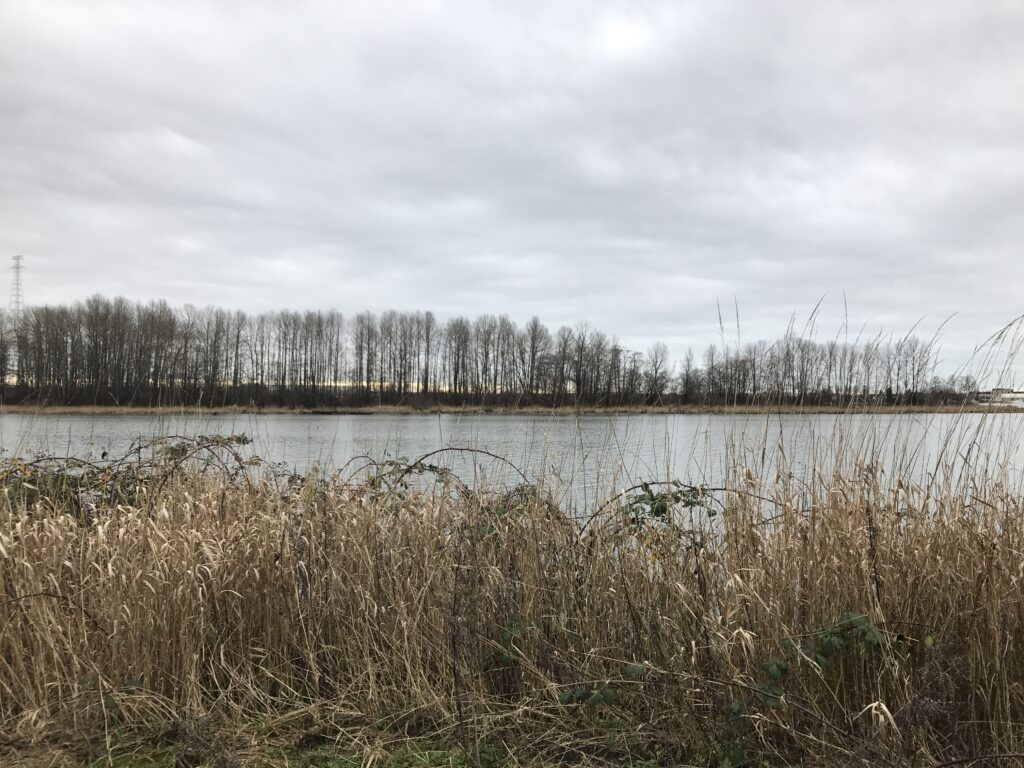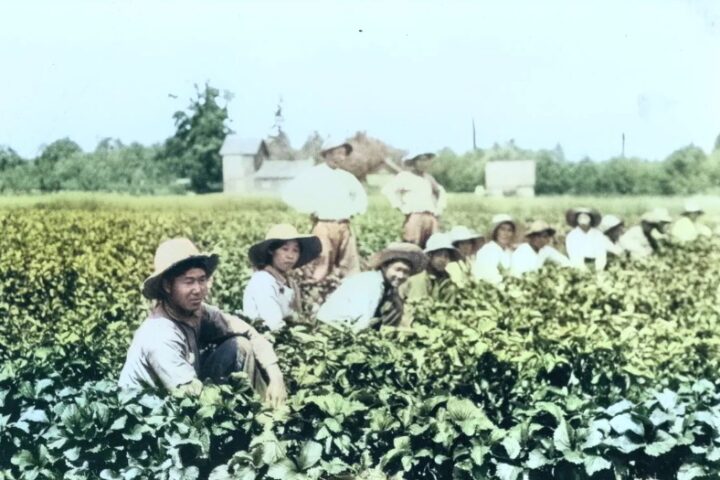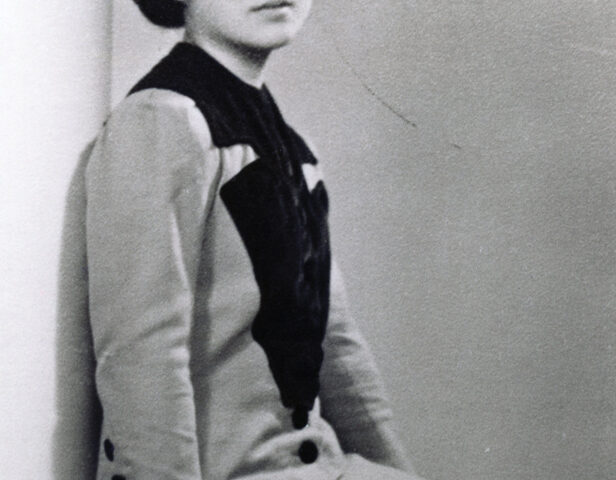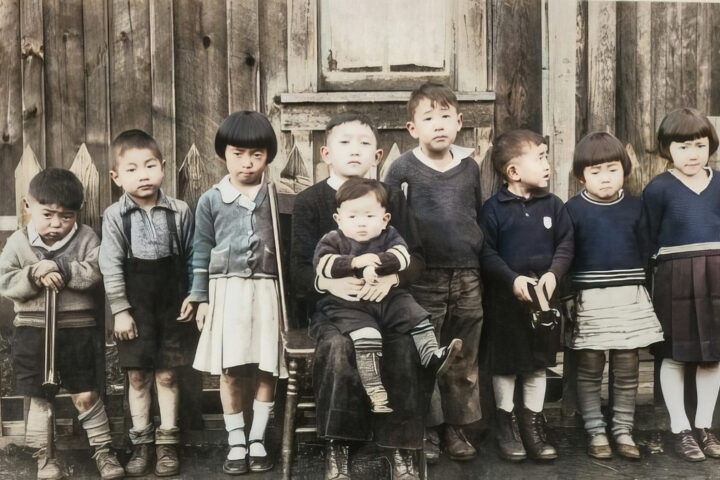The Story of Oikawa Island
By Lorene Oikawa, Past President NAJC

In 2024, the National Association of Japanese Canadians (NAJC) is looking at geographic locations where Japanese Canadians lived after migrating to Canada, since the 1800s, and where they were incarcerated in 1942.
My uncle, George Oikawa, told me about the time he went to visit Japan. He was in the taxi going to Sendai, Miyagi ken. The taxi driver asked him why he was visiting, and my uncle said he wanted to find out about where his family came from. The taxi driver asked his name. When my uncle responded, “Oikawa,” the taxi driver laughed and said the whole town was full of Oikawas.
Before the Meiji Restoration started in 1868, Japanese were not allowed to travel or return from trips outside of the country. With the restrictions lifted, Japanese started to explore different countries.
One of the reasons, the Oikawas from Sendai are in Canada is because of a visionary entrepreneur named Jinzaburo (also spelled Jinsaburo) Oikawa. He first came to Canada in 1896 after hearing stories about the plentiful jobs and the fish that filled the Fraser River. At the time, White fishers would throw out dog salmon and salmon roe thinking it was garbage. Dog salmon is another name for chum salmon. This fish develops large teeth during spawning, and it is believed the appearance of the canine-like teeth inspired the name.
Jinzaburo Oikawa saw a potential business to transport the fish and roe to Japan. He traded his home-brewed sake to fishers for the dog salmon. He noted that he would filter the sake because of the different taste preferences of the White fishers. Word spread and he was getting a steady supply of dog salmon. He would pack the fish in salt in waterproof containers. He started selling dog salmon wholesale to cookhouses and it was a success. The huge price difference between dog salmon and sockeye salmon far outweighed the difference in taste. The cookhouses were preparing meals for Japanese workers in the sawmills and on the railway. He started to get more workers wanting to join his venture, but it wasn’t enough.
He made a few trips to Japan to bring his family, professionals such as a cooper and brewer, and supplies. His business expanded.
“We bought, salted, and shipped about two tons of the one-penny salmon to Japan that year (1902). Westerners do not eat salmon roe: they throw it all away. We collected that, salted it, and shipped it to Japan, too. Shipping to Japan is very expensive and the duty on salted salmon roe at Yokohama was 24 yen per 100. It was painstaking and expensive work (four years and 7000 yen worth of experiments and failures) but we finally mastered the processing and shipping. We made over 10,000 yen profit in 1902. I decided to put that money into building up our colony and projects in Canada further. Chapter 9 of Jinsaburo Oikawa’s Diary. “Dog Salmon and Salmon Roe Exports.”
After much experimentation, it was his wife Yaeno who determined the correct proportions of salt to ensure the proper preservation of the salmon roe during its voyage to Japan.
In 1906, Jinzaburo went to Japan to get more workers. The government would not approve of men leaving when they had just gone through the Russo-Japanese War.
Jinzaburo had a plan to sneak men out on the 196.2-ton sailing ship, Suian Maru.
The men had to pay 100 yen for their fare, but after another two years of crop failures, they would sell their land and knew they could regain the money once they were working in Canada.
The ship left Oginohama port at 7:30 a.m. on August 31, 1906, with 82 passengers and Jinzaburo. Jinzaburo knew it would be a long journey with some rough seas so he checked in on the passengers, and brought out games, shogi (similar to chess) and go-i (similar to Othello) during the voyage. He also encouraged them to learn the English alphabet and remembering the advice he received on his first trip, to learn how to sign their name in English. They also sang and danced. Kimpei Goto sang a Miyagi folksong called Sansa Shigure. You can hear a sample of the song at https://bit.ly/SansaShigure The first verse:
Sansa shigure ka, kayano no ame ka
Oto mo sede kite murekakaru
He sang the six verses and added a final verse that had some of the passengers in tears.
A long voyage, crossing an angry sea,
Going to Canada, and returning home no more.
My uncle Buck (Tatsuro) Suzuki recalled his father telling him about the voyage.
“…it took them almost three months to come across. So by the time the three months were up, they were down to the last barrel of rice, one bowl of rice per day, nothing else, hardly any drinking water left. So seeing that the schooner was running quite high and when they reached the mouth of Juan de Fuca strait they hit a terrific blow there and the ship was very light. They didn’t know what to do;, they needed more ballast. So Dad said he can remember, he was still young in those days, everybody stripped to the waist and they got buckets and they didn’t have to lean over the side to get the water but they got the salt water, put it in these barrels, lashed it down below decks for ballast. In that way, they saved their ship.”
He goes on to describe the dangerous entrance to Juan de Fuca from the American side and how the Canadian side is known as the “Graveyard of the Pacific.” They left on August 31 and arrived at Beecher Bay, north of Victoria on Vancouver Island on October 19.
Some of the workers left the ship aboard some small boats, but they were quickly picked up by the police. Kimpei Goto was startled by the sounds, smells, and what he saw in the city of Victoria. The worst was hearing a man who verbally assaulted them with the word “Jap.” The group had been warned by Jinzaburo that it was a derogatory word, a slur against Japanese.
Yoshie Saburo, a clerk for the Consul General of Japan in Vancouver, knew Jinzaburo Oikawa and negotiated permission for the 82 to stay in Vancouver. The group had agreed to pay the fine the ship’s captain faced and they agreed to work for one year for the railway.
The 82 were brought to the Powell Street area in Vancouver and they were separated to stay at 16 different Japanese Inns. The area was a busy, thriving Japanese Canadian community. In 1907 they experienced an anti-Asian riot with a mob that threatened their lives and the incident ended up creating restrictions on immigration from Japan.
The men would fulfill their commitment to work in treacherous conditions on the railway and then most went to Oikawa-jima. There was the year-round production of sake, soy sauce, rice bran, and polished rice. They worked the fishery on the island from June to October and then in nearby lumber mills or clearing trees in Sunbury during the winter. By 1911, they also started producing winter vegetables for the Vancouver market including hakusai, kabocha, and daikon. Oikawa produced pickled daikon (takuan) which became a popular item for the Japanese Canadian community. Unfortunately, in 1911, a rival complained about the sake to the authorities and they arrived with axes. Apparently, the little creek on Oikawa-jima was flowing with pure sake.
In 1912, tragedy struck the family when the youngest son Eiji accidentally drowned. Jinzaburo was not the same after the loss of Eiji who he thought would take over from him. In 1916, his eldest son Taijiro (who had previously lived in Canada) came to Oikawa-jima upon his father’s instruction and took over operations. In 1917, Jinzaburo, his wife Yaeno, and his daughter Shima left for Japan.
The politics of the world was continuing to shift.
In 1919, the federal government announced it would “gradually eliminate Orientals from the fishery” by reducing the number of licenses they were issued. The federal government starts restricting licenses to those who are not White British subjects or Indigenous. In 1922, Japanese Canadians had about 1,989 licenses. By 1925, close to 1,000 licenses have been taken away from Japanese Canadians.
The First World War was in progress from 1914 to 1918. Over 200 Japanese Canadians try to enlist in the Canadian army and are rejected. 195 of the volunteers pay their own way to Alberta where they are accepted as Canadian battalion of the British army. They are shipped to Europe where 54 are killed and 92 are wounded.
The Second World War provided an excuse for racist politicians in BC who were targeting Japanese Canadians. In 1942, about 22,000 Canadians of Japanese ethnicity including the families of Oikawa Island, multi-generational families, and those who served Canada in the First World War were forcibly uprooted, dispossessed, interned/incarcerated, and exiled. The federal government disregarded the Canadian Military and RCMP who advised them there wasn’t any evidence of any wrongdoing by Japanese Canadians. The internment/incarceration did not end until 1949, four years after the Second World War ended. Oikawa Island remains deserted and even its name was removed.
Reference
Phantom Immigrants by Jiro Nitta, Translation by David Sulz




